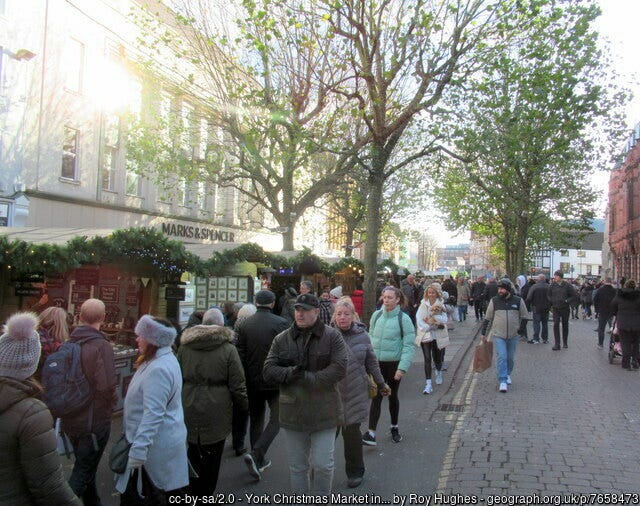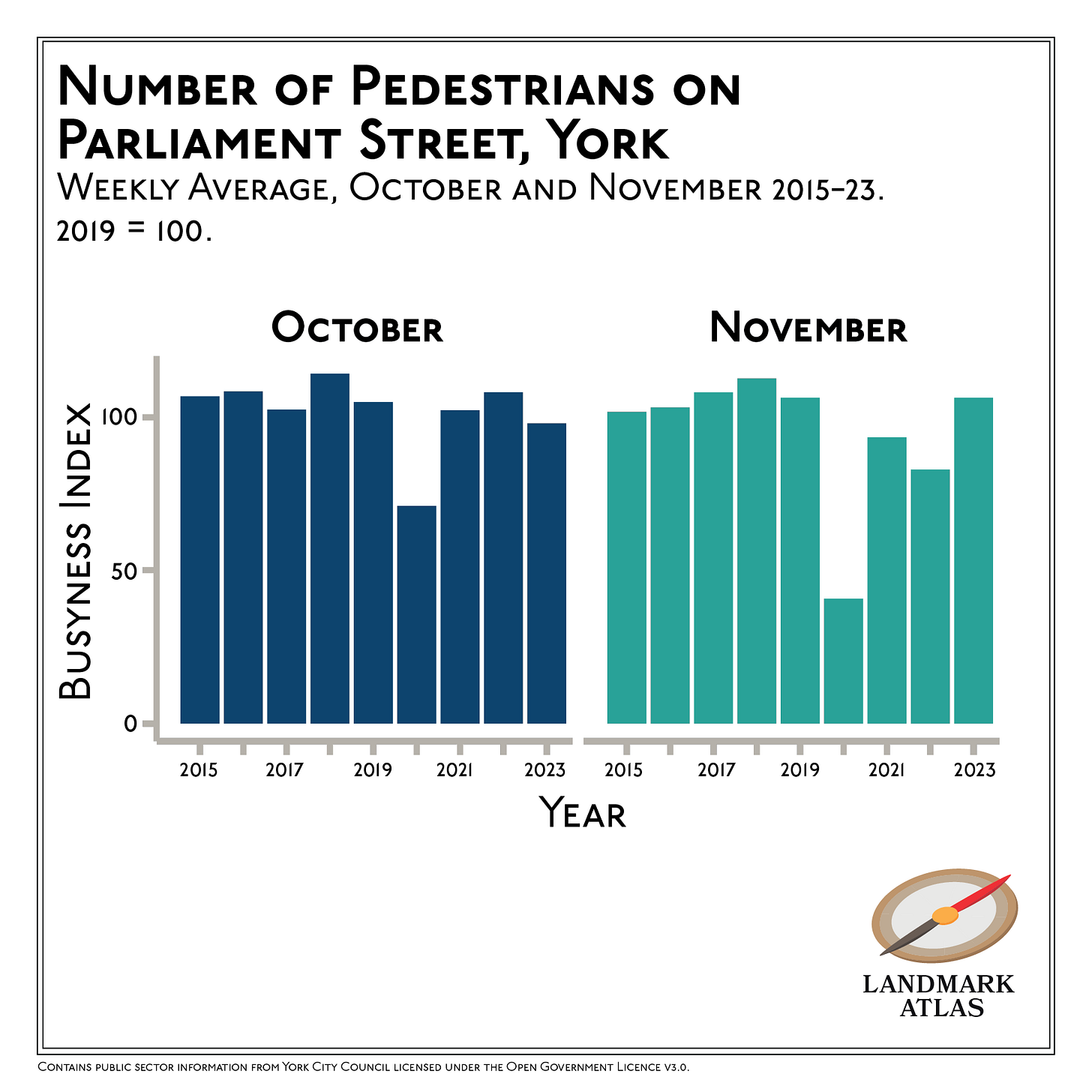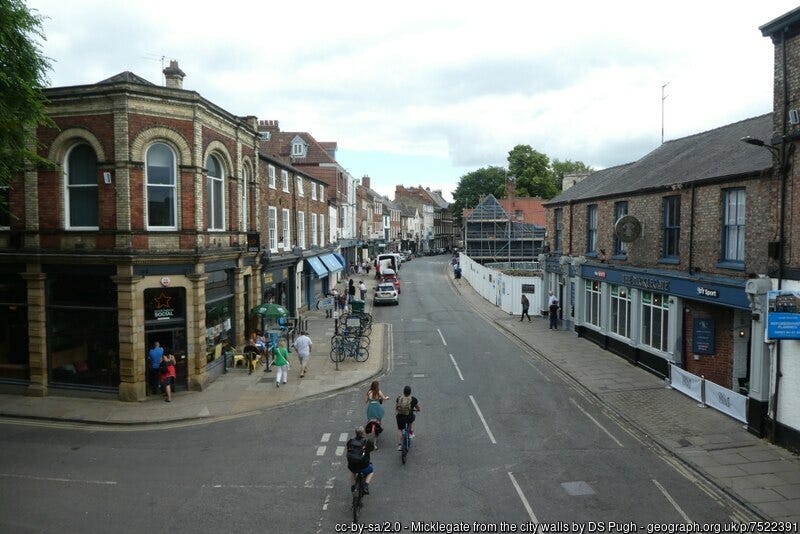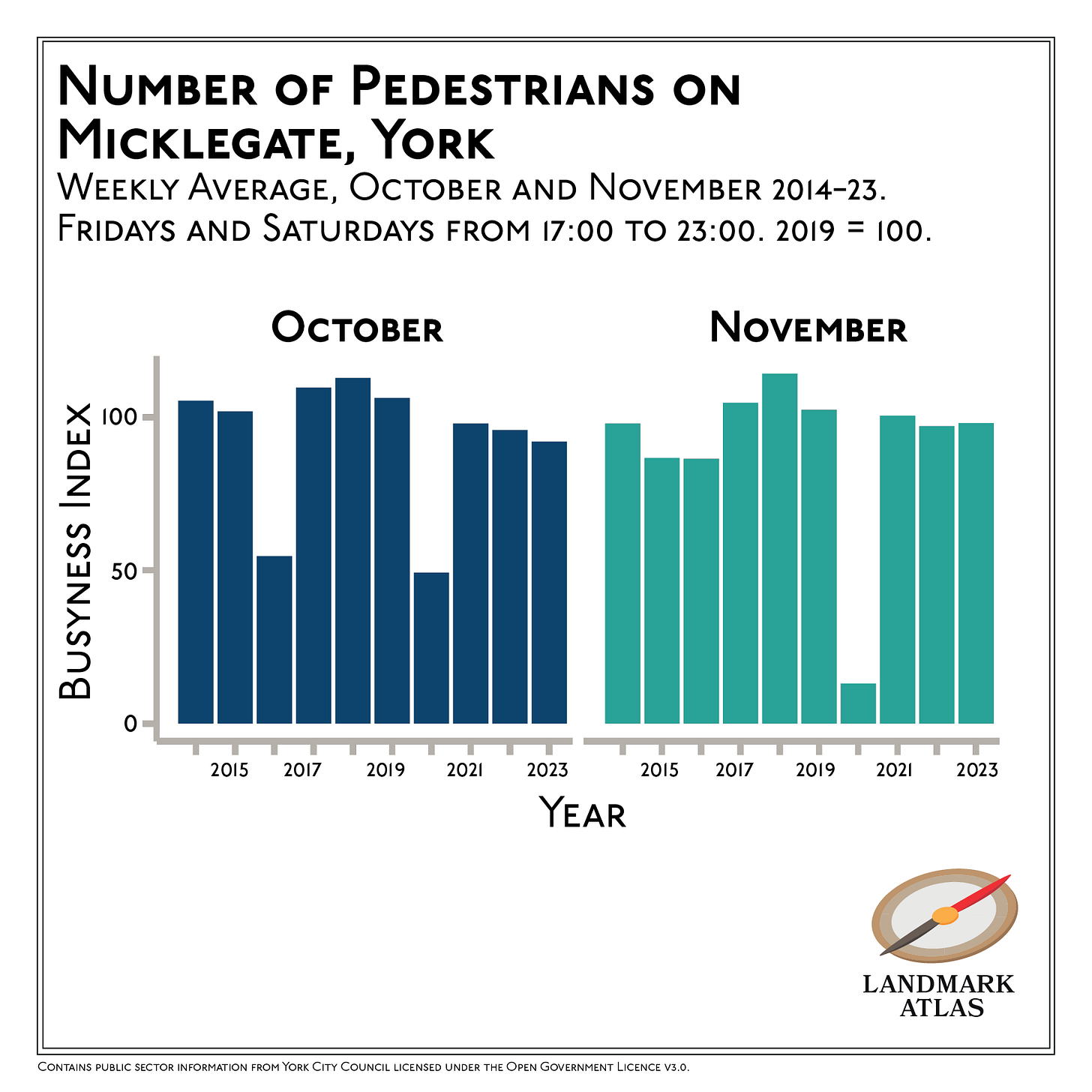York City Centre Is Only Just Reaching Pre-Pandemic Activity Levels
British retail has had a tough 2023 as we move into the Christmas shopping season

The Christmas season is the busiest time of year for British shops. People buy presents for their loved ones and look for bargains in the post-Christmas and Black Friday sales.
According to the British Retail Consortium, retailers can usually expect to make about one fifth of the whole year’s sales in the months of November and December.
But so far this winter shopping season has been a subdued one, as we can see from national statistics and more local data for the city of York.
York’s shopping streets
York’s street names give clues as to how old the city is. The city centre is filled with streets ending in “-gate”, indicating their proximity to the old city walls.
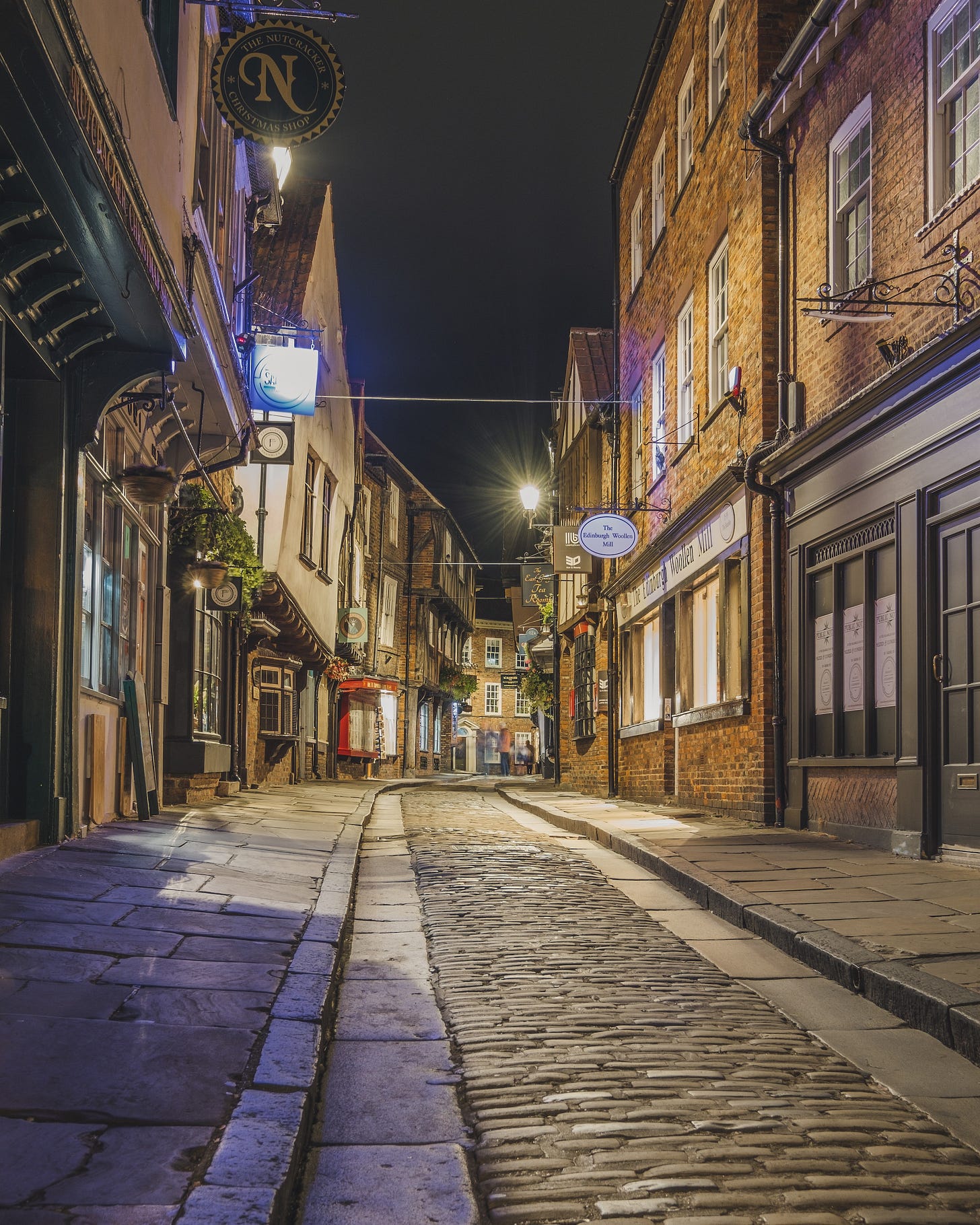
No discussion of York city centre would be complete without a mention of the Shambles. Renowned for its history, in medieval times it was a butcher’s row. Some of the street’s shops still have meat hooks hanging outside where the butchers of old used to hang their cuts for sale.
York City Council publishes footfall data for two of the city's notable streets: Micklegate and Parliament Street1. In other words, this data records how many people are captured by cameras walking in and out of particular streets. We can use this data to understand how busy the city’s streets are, and thus get a sense of business at its shops, pubs and restaurants.
Parliament Street
Let’s look first at Parliament Street. It is home to the kind of high street shops you will find in any British city such as Vodafone, Pret A Manger and The Fragrance Shop.
This chart takes 2019, which was the last pre-pandemic year, as the baseline activity level. The wavy line is the weekly total count of pedestrians counted coming in and out of Parliament Street. The dark blue line surrounded by grey is a best-fit line. This smooths out the inevitable hourly and daily variation to get a sense of the underlying trend. The lilac blocks indicate when national Covid lockdowns meant the closure of non-essential shops. York city centre became much quieter during these periods.
For most of 2023 pedestrian activity has trended below the 2019 average. It was only during the autumn months since September that Parliament Street has been as busy as it was in 2019.
However, the 2019 baseline is the average for the entire year, including the quieter months. Shops are generally busier in the run-up to Christmas. For a different comparison, let’s look at the months of October and November.
October 2023 was a quiet month for Parliament Street. The height of the navy blue bar for this October is lower than the same months of the pre-pandemic years from 2015 to 2019.
November 2023 was a busier month than October on Parliament Street. Pedestrian activity levels in November were comparable to the same months in the pre-pandemic
The autumn of 2020 was severely affected by Covid restrictions. England was in national lockdown in November of that year, which explains the very low bar for that month.
This isn’t shown on the chart, but the early data for December for Parliament Street looks strong.
Micklegate
Let’s now turn to Micklegate. This is the main road leading into York from the south side of the River Ouse.
It’s a very similar trend to Parliament Street: a long recovery from the Covid era that is only now just reaching the levels seen in 2019.
Micklegate is renowned for its pubs and bars. The next chart looks at October and November as above but filters it to Friday and Saturday evenings only. Are people going for an evening out on Micklegate like they used to?
October was a slow month for Micklegate’s evening crowd but November has held up better against previous years.
Retail has had a difficult year
The national picture of the retail industry supports the local data from York indicating that the sector is having a difficult year.
The lilac shaded area in the chart above is 2023. This year the volume of sales in Britain has trended downwards but, due to the price increases we have all experienced, the value of sales has been going upwards. In other words, British people are buying less stuff but paying more for it.
The volume of sales is at the lowest level since February 2021, when England, Scotland and Wales were in a strict lockdown.
Similarly, sales at non-food shops have been on a generally negative trend and are now at their lowest levels since March 2021.
It’s been one thing after another for Britain’s city centre shops in the last few years.
They were made to take the unprecedented step of closing for large portions of 2020 and 2021 under Covid restrictions. Even when they were open they often had to accommodate social distancing rules, further restricting shopping and dining out.
At the same time inflation began to bite. The inflation rate (CPI) passed 5% annually in November 2021. Almost two years later it has only just come down below that figure. This bout of inflation has increased prices of all kinds of everyday goods, making it harder for many British people to justify any luxury spending.
Retail will be hoping for a brighter 2024, but at the moment the data shows little reason for optimism.
I’m grateful to York CC for doing this. More local authorities should publish this data. I used data last updated on 13 December 2023.






